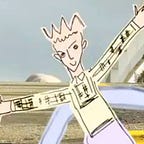ABOUT Women Filmmakers: Interviews
Backstory
In 2005, Aotearoa New Zealand was proud of our women feature filmmakers; and of our equitable allocation of taxpayer funding. No gender problem here, I was told by authoritative people: we have Jane Campion, Niki Caro, Gaylene Preston, Christine Jeffs. Merata Mita, whose Mauri was released in 1988, and who was living overseas, was also sometimes mentioned (not often enough): I’m very grateful to Cushla Parekowhai for permission to include her interview of Merata.
I didn’t agree that there was no gender problem, and believed there was a problem for Māori women specifically. And by 2008, twenty years after Mauri was released, I had the statistics to prove both things. I then heard more frequently that women needed to be more confident, more persistent: it was all their own fault!
I wanted to hear from the filmmakers themselves about the problems they faced and how they were affected by them. But for a decade, with one exception — ‘no 7’ — back in 2005, they wouldn’t speak, even in confidence, about their negative experiences of structural inequities. They were too scared.
But some did finish their features and I interviewed them about how and why they made their films: it was a life-enhancing counterpoint to the tedious work of collecting statistics and the sadness of the results. I love and am grateful to every one of those interviewees.
Behind the scenes, some of those established women filmmakers did work for change. (The language used to refer to this was ‘having a quiet word’.) WIFTNZ did too. But no-one made a public statement about systemic discrimination here, though Jane Campion often addressed the global issues for women filmmakers. If they had, I believe it would have made a difference, as it does when authoritative voices identify other kinds of systemic injustice.
Then, in 2015, Chelsea Winstanley spoke up, supported by other Māori women, at the Big Screen Symposium. It was a beautiful moment.
Change since has been incremental.
How did I choose interviewees?
If feature filmmakers were already well-served by media with a large readership I didn’t approach them for interviews. I was most interested in those I couldn’t find enough information about and whose work represented realities not often enough seen on our screens. Sometimes a short film caught my eye and I approached its maker. Webseries and crowdfunding intrigued me. So I interviewed women involved in those, too.
Some women declined to be interviewed, perhaps because of the demands of a long email conversation: it’s wonderful now that Zoom offers a free record/transcribe service. Or, they might have felt it wasn’t worthwhile for a publication with a limited readership.
Why are women from outside Aotearoa included?
Again, those running crowdfunding campaigns caught my eye and those whose work represents realities not often seen on our screens. Filmmakers who run film festivals also intrigue me, thinking about Ava DuVernay’s statement: ‘If your dream only includes you, it’s too small’.
Am I glad I did these interviews?
Yes. And I hope they provide you with some useful information if you too want to tell stories on screen. Or want to know about women’s film practices in some detail. Or to be inspired even!
Are these all?
No. Some interviews with filmmaker activists are in my Women’s Film Activism publication and interviews with some filmmakers involved in film festivals are in my Women’s Film Festivals and Databases publication. More interviews with women who don’t make films but whose work is related are in my Wellywood Woman Diary. Others informed articles like Dear Jemaine. More are published by Eurimages. But I don’t plan to interview any more!
